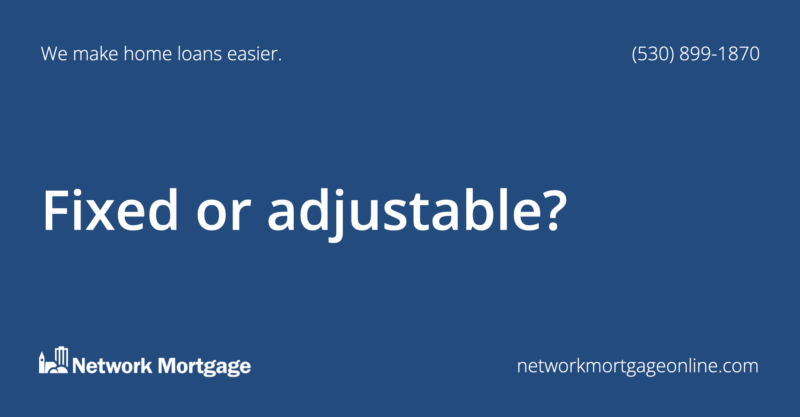When looking for a home loan, one of your biggest decisions will be deciding between a fixed-rate mortgage or an adjustable-rate mortgage. Let’s take a look at the differences.
Should you choose a fixed-rate or an adjustable-rate mortgage?
Deciding between a fixed-rate and an adjustable-rate mortgage (ARM) depends on your specific financial situation, risk tolerance, and long-term plans. Each type of mortgage has its pros and cons, so understanding the key differences will help you make an informed decision.
Fixed-rate mortgage
Adjustable-rate mortgage
What is a financial index?
In the context of adjustable-rate mortgages, a “financial index” is used as a reference to determine how the interest rate on the loan will adjust after the initial fixed-rate period.
The interest rate of an ARM is often composed of two parts: The index rate and a fixed margin added by the lender. The index rate is the dynamic part that changes over time, and is usually based on a specific financial index. The lender’s margin remains constant.
Several financial indexes are commonly used to adjust ARMs, with the choice often depending on the lender and the terms of the loan. Some of the most frequently used indexes include:
- London Interbank Offered Rate (LIBOR)
- Constant Maturity Treasury (CMT)
- Cost of Funds Index (COFI)
- 11th District Cost of Funds Index (11th District COFI)
- Prime Rate
- Secured Overnight Financing Rate (SOFR)
- One-Year Treasury Index
It’s important to note that the choice of index can impact the way your ARM’s interest rate adjusts. Additionally, some lenders may use proprietary indexes. When considering an ARM, it’s crucial to understand which index will be used, how it functions, and how it might affect your mortgage payments over time.
Other factors to consider
Future plans
If you plan to stay in your home for a long time, a fixed-rate mortgage may provide stability and peace of mind. On the other hand, if you expect to move or refinance within a few years, an ARM’s lower initial rate might be more advantageous.
Risk tolerance
Assess how comfortable you are with potential payment fluctuations. If you prefer predictability, a fixed-rate mortgage may be the safer option.
Current interest rates
Consider the current interest rate environment. If rates are relatively low, a fixed-rate mortgage can lock in these rates for the loan’s duration.
Stability or flexibility?
In general, fixed-rate mortgages are often considered more conservative and are preferred by those who prioritize stability.
ARMs can be more suitable for financially savvy borrowers who are confident in their ability to manage potential rate increases, or those who plan to move or refinance before the rate adjusts.
What is a variable-rate mortgage?
The terms “adjustable-rate mortgage” and “variable-rate mortgage” are sometimes used interchangeably, but they can have slightly different meanings depending on the context and where you live. The main difference between the two lies in the clarity of how the interest rate changes.
Adjustable-rate mortgages are more precisely defined, with their rate adjustments tied to specific financial indexes and subject to rate caps.
Variable-rate mortgages, on the other hand, might not have the same level of transparency and could have interest rates that change based on the lender’s discretion.
When considering either type of mortgage, borrowers should carefully review the loan terms, including the frequency of rate adjustments, the initial fixed-rate period, interest rate caps, and any potential risks associated with changing interest rates.
Summary
A fixed-rate mortgage offers stable, unchanging interest rates throughout the loan term, providing predictability for monthly payments.
In contrast, an adjustable-rate mortgage (ARM) starts with a fixed-rate period, then transitions to adjustable rates based on market indexes. ARMs may offer lower initial rates initially, but carry the risk of future rate increases.
The choice of fixed versus adjustable depends on individual factors like long-term plans, risk tolerance, and current interest rate conditions. Be sure to consult with an experienced mortgage broker for help specific to your situation.
We can help
Trying to decipher all the different types of mortgages can get confusing. If you’d like to speak with some smart folks who can clear away the jargon and explain these loans in simple terms, you’ve come to the right place.
Related
- Are you buying your first home?
- Get a rate quote
- Understanding mortgage rates
- Why do mortgage rates fluctuate?

